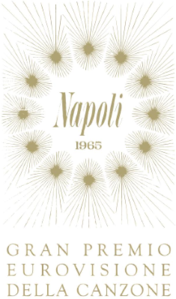
Back مسابقة الأغنية الأوروبية 1965 Arabic 1965 Avroviziya Mahnı Müsabiqəsi Azerbaijani Конкурс песні Еўрабачанне 1965 Byelorussian Конкурс песьні Эўрабачаньне-1965 BE-X-OLD Евровизия 1965 Bulgarian Eurosong 1965. BS Festival de la Cançó d'Eurovisió 1965 Catalan Eurovision Song Contest 1965 Danish Eurovision Song Contest 1965 German Διαγωνισμός Τραγουδιού Eurovision 1965 Greek
| Eurovision Song Contest 1965 | |
|---|---|
 | |
| Dates | |
| Final | 20 March 1965 |
| Host | |
| Venue | Sala di Concerto della RAI Naples, Italy |
| Presenter(s) | Renata Mauro |
| Director | Romolo Siena |
| Musical director | Gianni Ferrio |
| EBU scrutineer | Miroslav Vilček |
| Host broadcaster | Radiotelevisione italiana (RAI) |
| Website | eurovision |
| Participants | |
| Number of entries | 18 |
| Debuting countries | |
| Returning countries | |
| Non-returning countries | None |
| |
| Vote | |
| Voting system | Each country awarded 5, 3 and 1 points (or combinations thereof) to their three favourite songs |
| Winning song | "Poupée de cire, poupée de son" |
The Eurovision Song Contest 1965 was the 10th edition of the Eurovision Song Contest, held on 20 March 1965 in the Sala di Concerto della RAI in Naples, Italy and presented by Renata Mauro. Organised by the European Broadcasting Union (EBU) and host broadcaster Radiotelevisione italiana (RAI), the contest was held in Italy following the country's victory at the 1964 contest with the song "Non ho l'età" by Gigliola Cinquetti. Eighteen countries were represented at the contest – a new record number of participants. Joining the sixteen countries which had participated in the previous year's event were Sweden, who returned after a one-year absence, and Ireland, in its first-ever contest entry.
The winner was Luxembourg with the song "Poupée de cire, poupée de son", written by Serge Gainsbourg, and performed by the French singer France Gall. It was Luxembourg's second contest victory, following the nation's win in 1961. The United Kingdom finished in second place for the fifth time, France placed third, Austria achieved its best-ever result with a fourth-place finish, and four countries received nul points and finished in joint last place. It was the first time that a pop song had won the contest, and marked the beginning of a sea change in the contest that saw it develop from an event dominated by chansons and ballads in its early years to one more greatly associated with schlager and pop music for the remainder of the 1960s and into the 1970s and 1980s.
